Begeman Hall (1903)
A Note on the Names of this Building:
Even though the word "Laboratory" was chiseled over the north, main entrance when the building was constructed, this building does not seem to have received an official name. During the planning, construction, and earliest years of this building, the terms "Laboratory Building", "Science Hall", "Physical Laboratory", "Physical Science Laboratory", and "Science Building" were used interchangeably. By about 1912, the school catalogue began to use "Science Building" fairly consistently, though some of the other early names were used occasionally for many years thereafter. By 1970, when most chemistry classes had moved to what is now known as McCollum Science Hall, the catalogue began to use the term "Physics Building" on a consistent basis. In 2007, the building was officially named Begeman Hall. This essay will use the building name that is appropriate for the period under discussion.
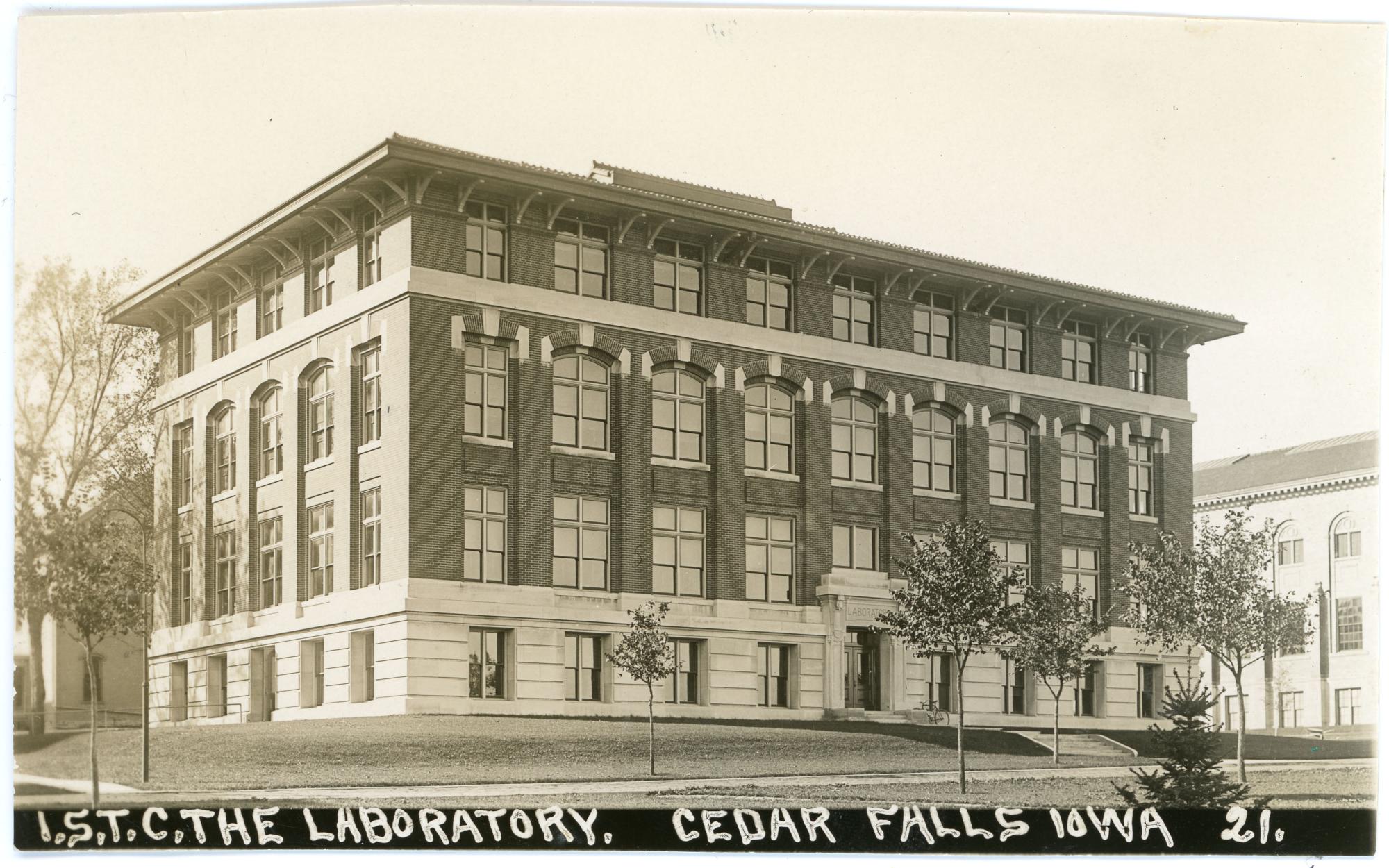
The Iowa State Normal School, now the University of Northern Iowa, included science courses in its curriculum when the school opened in September 1876. Professor Moses Willard Bartlett was in charge of that work. The earliest laboratories probably consisted of just small arrays of equipment spread out on tables in a classroom. But by the fall of 1878, when the school consisted of only a single classroom building, a former storeroom was converted into a laboratory. The student newspaper, The Students' Offering, reported:
- "The laboratory has been furnished with about $600 worth of philosophical and chemical apparatus, and now the instruction given in physics and chemistry is satisfactory to the teacher and thorough and comprehensive to the students."
In 1880, the school bought two microscopes and a polariscope, a device that used polarized light. A spectroscope arrived in 1883. In that same year, science instructor Maude Gilchrist offered an essay entitled "An Hour with a Microscope" in the student newspaper.

In 1892, the school improved its laboratory facilities and acquired a new batch of microscopes. Conditions, however, remained less than ideal. Serious accidents occurred in the chemistry laboratory in 1893 and 1894. Perhaps as a result of these accidents, or, more likely, as a result of the completion of a new classroom and administration building, the school developed new chemistry and physics laboratories. The chemistry laboratory included new tables, complete with sinks and bottle racks. Just as important, according to the student newspaper, the new laboratory had venting hoods where "gases will be so taken care of that chemistry teaching will not provoke the wrath of all other departments."
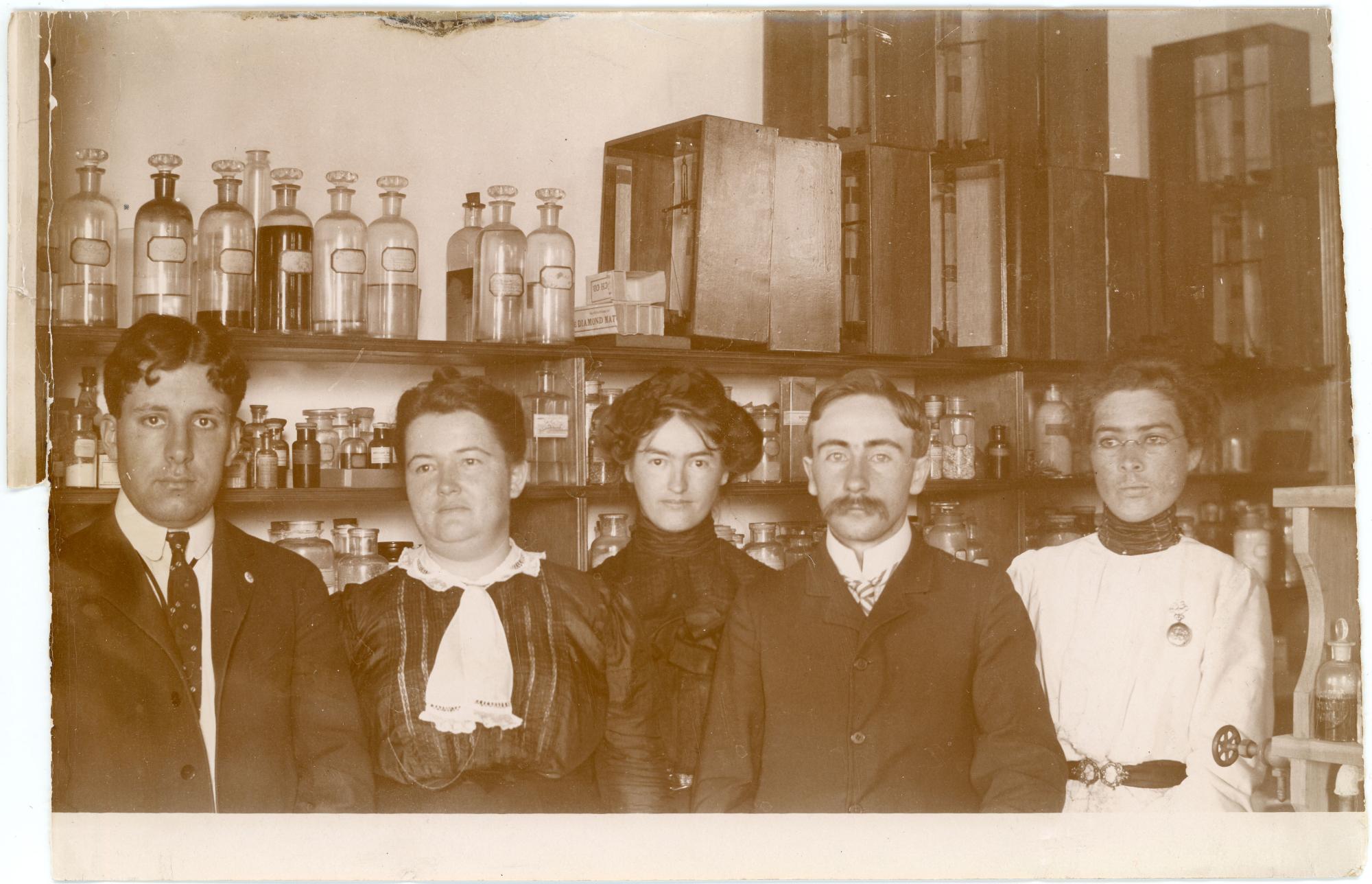
But school officials knew that there was much left to be done. In his report to the Board of Directors for the 1895-1897 biennium, President Seerley outlined his recommendations for campus capital improvements. Among those recommendations was a "Chemical and Physical Laboratory". He noted that the facilities, then housed in a classroom building used by faculty and students in other curricula, were unsatisfactory for several reasons. First, the facilities and equipment could barely serve the students then enrolled in chemistry and physics classes. Second, despite the new venting hoods, the gases generated in the course of laboratory work were still highly offensive to students engaged in other work. And, third, chemicals stored and used in a laboratory posed a significant threat of fire. President Seerley believed that chemistry laboratories should be isolated in a building separate from other classroom buildings. In his list of recommendations for capital improvements, President Seerley ranked a laboratory building second only to his request for a large classroom building with an auditorium.
The Board and the General Assembly responded by supporting the request for a classroom and auditorium building first. This culminated in the construction of what is now known as Lang Hall. With that building under construction, President Seerley renewed his plea for a laboratory building in his 1901 report to the Board. He stated that the school was required by law to teach chemistry and physics. He said that such subjects could not be taught in ordinary recitation rooms. Therefore, he continued, "We earnestly recommend that a building not connected with any other be erected for the sole use of these two departments of the school." He believed that such a building could be constructed for about $18,000.
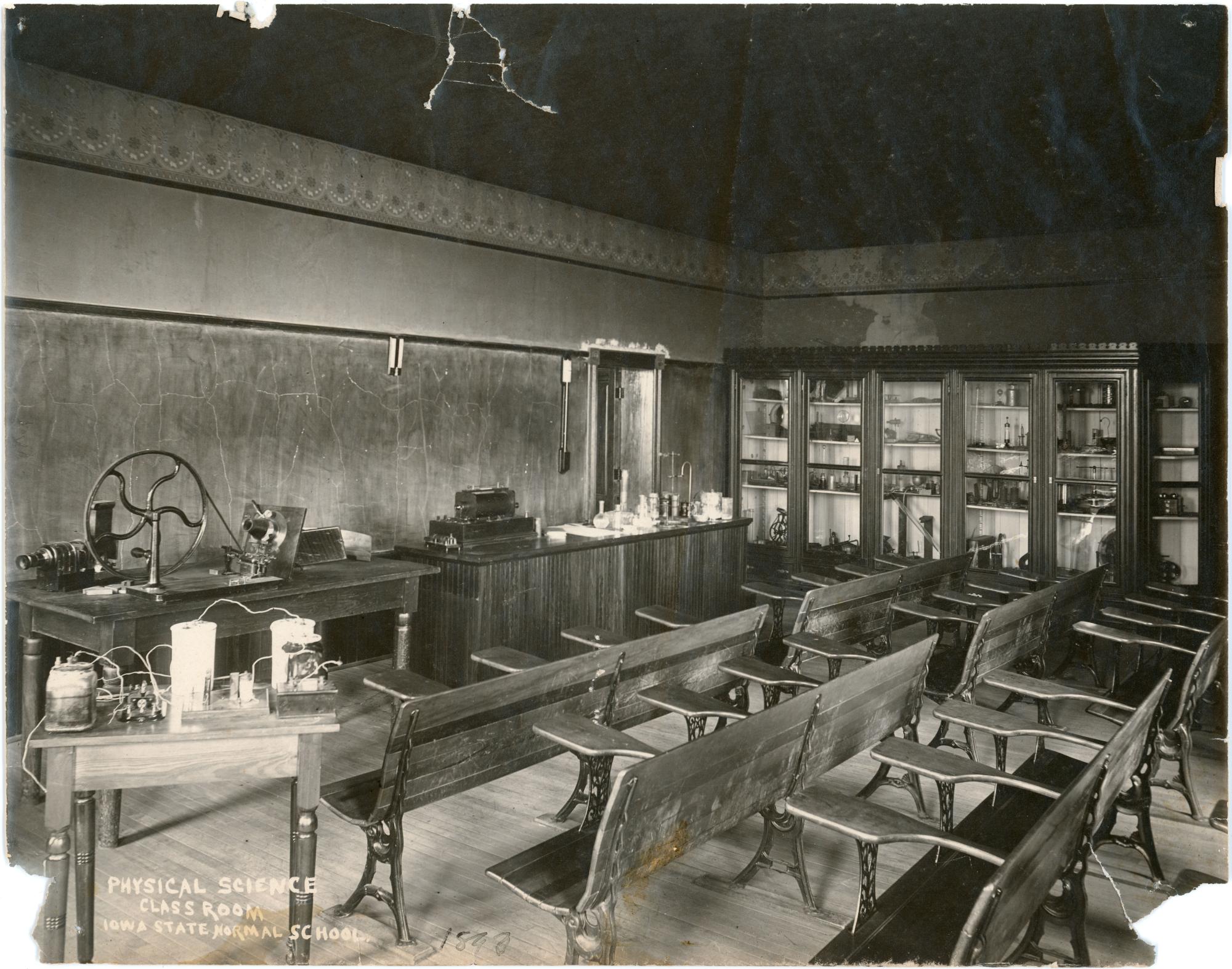
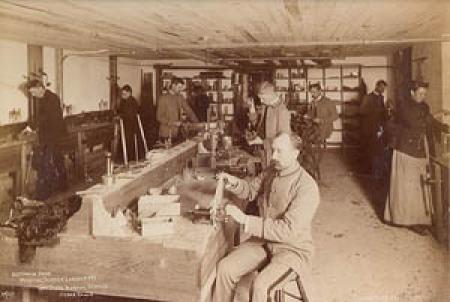
On April 4, 1902, the General Assembly passed a measure that, in general, changed the campus landscape forever, and, specifically, made the construction of a laboratory building possible. Beginning in 1903 and extending through 1908, the Normal School would receive one tenth of a mill from a state real estate tax. This money would be designated for capital improvements. School officials could expect to receive between $275,000-$300,000 over the course of that six year time period. With this source of funding assured, the Normal School could undertake an orderly building program. A laboratory building would be among the first projects. Money from the millage levy would also result in buildings that are now known as Seerley Hall, Sabin Hall, Wright Hall, the Innovative Teaching and Technology Center, and the President's House.

At its meeting on June 10, 1903, the Board adopted preliminary plans for a new laboratory building drawn up by Superintendent of Buildings and Grounds James E. Robinson.
The Board authorized excavation for the building and the construction of a foundation that would be sufficient to protect the excavation. They also authorized all necessary sewer and heating connections to the building. But things did not go quite as planned. At their September 9, 1903, meeting, the Board "deferred" the construction of the foundation. Exactly how far work had progressed is unclear. But apparently their plans had outstripped both funding and campus infrastructure.
The Board decided to devote its money and attention in the fall of 1903 to the specification and selection of material for the Gymnasium, which was in a slightly more advanced stage of planning and construction than the Laboratory Building. They also came to understand that the school would need a better steam plant to supply heat and power to the additional buildings that would be built over the next few years. Consequently, little work was done on the Laboratory Building. However, the Board did make one key decision. At its meeting on February 2, 1904, the Board decided that, whenever it could again turn its attention to the Laboratory Building, that building should be of "fire proof" construction. The threat of fire to buildings of that era was significant. In many ways the ability to construct large public buildings had outpaced the ability to protect them from fire. The buildings often had wooden frames and trusses, wooden flooring, wooden paneling and trim, wooden furniture, and highly flammable roofing material. In addition, lighting was just making the transition from the open flames of kerosene and gas to electricity. While that change was a great improvement in many respects, electrical wiring itself was in a primitive stage. To make matters worse, fire-fighting equipment, personnel, and techniques were geared to the level of house fires, and adequate, high pressure water supplies were only beginning to become available. A fire in a large building was very difficult to bring under control. The board decision to build a "fire proof" laboratory established a precedent for the building program that was to follow over the next few years.

On September 11, 1905, the Board approved plans drawn up by architects Proudfoot and Bird for the new Laboratory Building. The base of the building would measure 65 X 113 feet. The architects received a total of $1000 for their work on this building and for the proposed Library Building, now known as Seerley Hall. They would later receive additional fees for their continued work on the Laboratory Building. The Board authorized the construction of the foundation of the Laboratory Building, up to the grade line, to be done yet that fall. Superintendent of Buildings and Grounds James E. Robinson would supervise this work as well as the entire Laboratory Building construction project. At the December 12, 1905, meeting, the Board selected winning bids for construction materials for the building. The Gethmann Brick Company won contracts for several kinds of brick. Cut stone would come from Arthur Watson of Des Moines. Steel would come from H. E. Olbrich. In April 1906 the Board authorized construction of a utilities tunnel to the building.
By September 1906, the student newspaper reported that the work on the building was moving along well, with an anticipated completion date of January 1907. The article stated that the building would cost about $75,000 and would be "entirely fire proof", with "floors, ceiling, and roof composed of concrete." The building was not ready in January, but in that month the Board authorized President Seerley, Board member Roger Leavitt, professor of physics Louis Begeman and professor of chemistry Abbot C. Page to supervise the selection and purchase of $5000 worth of laboratory equipment. Later, the Board added $500 to that allocation.
The summer of 1907 was the next target date for completion. An article by Professor Page in the April 10, 1907, issue of the student newspaper used the new facility as a strong point in recruiting students to study chemistry in summer school. He said:
- "One entire floor of the building is occupied by the chemistry department and includes a classroom with raised seats, a general laboratory for the first year's work, a laboratory for quantitative analysis and other advanced work, a weighing room, a private laboratory and preparation room adjoining the classroom, a library, three supply rooms for the laboratories in which are desks for water analysis, assaying, photographic work, and chemical microscopy . . . These rooms are supplied with tables devised and built at the Normal, and the hoods and tables are equipped with steam, electricity, compressed air, water, and gas, as the case requires."

Exactly when the building opened for use is now unclear. A note in the September 11, 1907, student newspaper states that the physical sciences moved into the Laboratory Building "over the last six weeks." Yet, another article, this time by President Seerley on October 16, 1907, says that "The Laboratory Building has been much delayed by matters beyond the control of the Board of Trustees or else it would have been completed in June. As it is, the carpenters, plumbers, and electricians are just now completing their part of the work." Perhaps only parts of the building were available in the summer of 1907. It seems safe to assume that the building was completed sometime during the fall term of 1907.


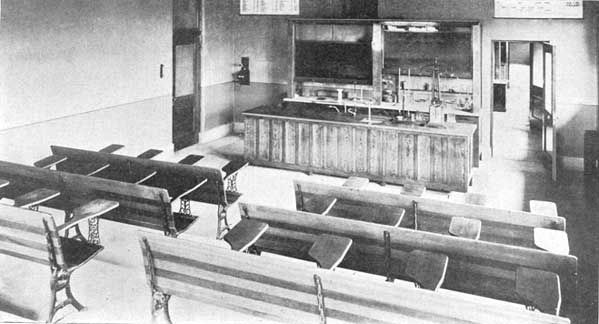
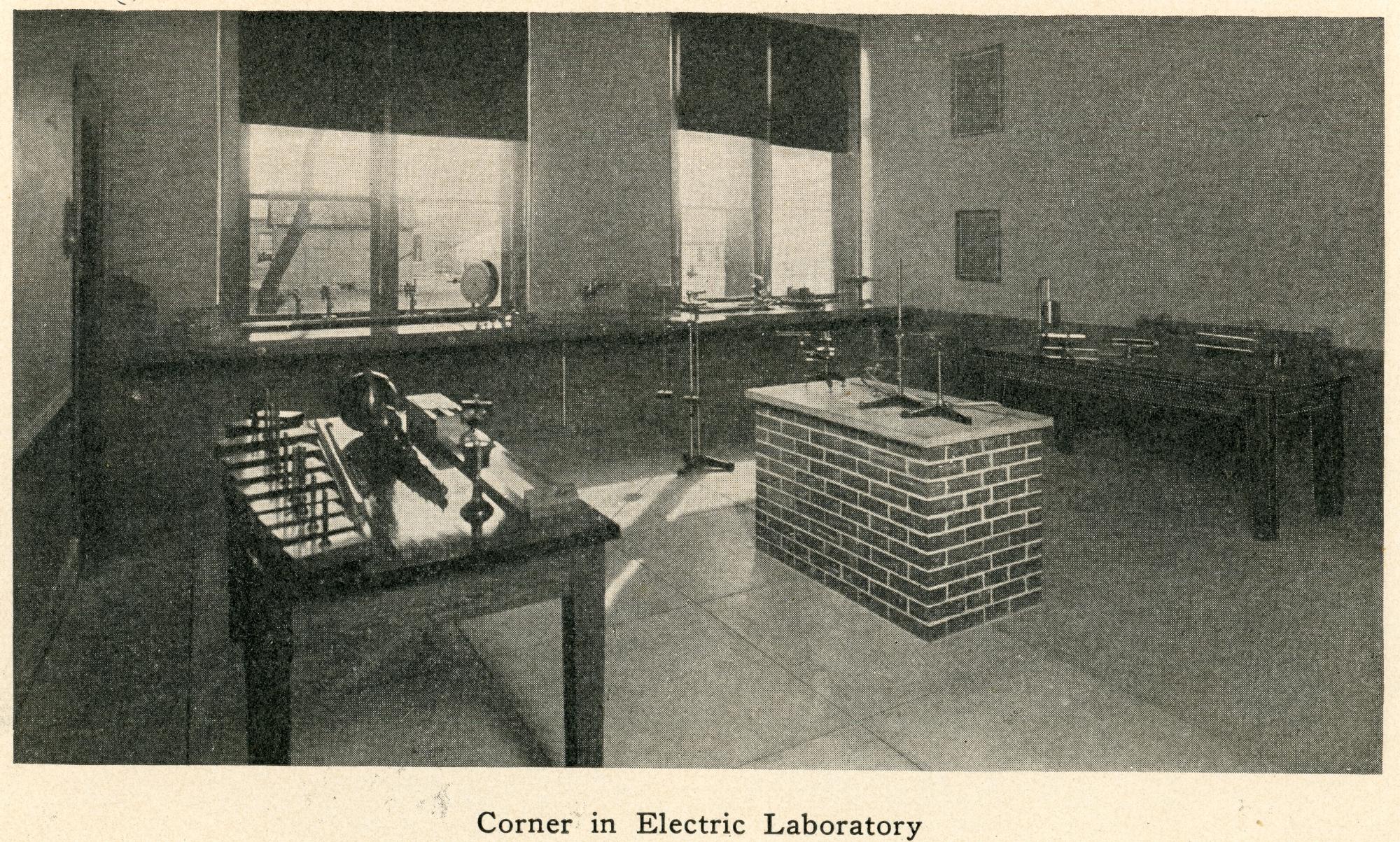

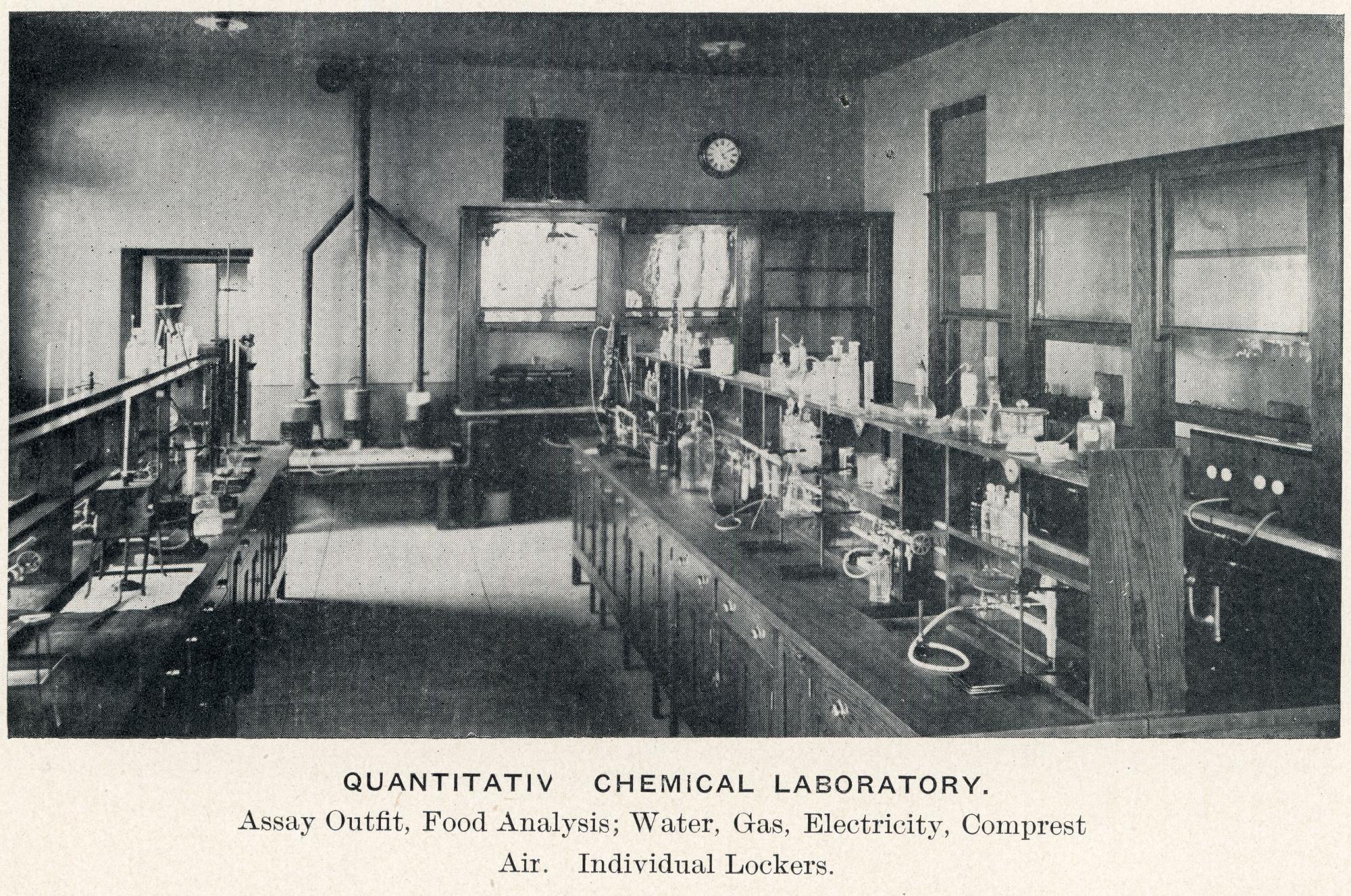
No matter when it opened, President Seerley was justifiably proud of the new facility. He wrote that "The new Science Laboratory is a very superior building in every respect and is completely equipped to prepare teachers of physics and chemistry for high schools as well as to give instruction to other students in these important sciences." He believed that there was "no better laboratory in the United States where the purpose is to give instruction in these branches. "He stated that this "remarkable building and its equipment put the Normal School among the most progressive schools in the entire country." He was happy that the geography faculty, then included among the sciences, would be united on the first level of the building. This was thought to be a temporary arrangement for the geography faculty until a natural sciences building was constructed.
The 1908 Old Gold, the student yearbook, probably gives the best description of the new building just after it opened. A ten page essay, probably written by a member of the science faculty, clearly describes the layout and equipment of the building. The essay includes an excellent series of photographs of the facilities, some of which are presented above. The first level was occupied by the geography faculty. The second level included physics laboratories, with a general laboratory, an advanced mechanical laboratory, an electrical laboratory, a light and sound laboratory, and a photographic laboratory. The third level, which physics shared to a limited extent with chemistry, included classrooms, offices, and an apparatus room. The fourth level was devoted to chemistry, including a nicely equipped classroom, a general and qualitative analysis laboratory, and a quantitative laboratory. It is interesting to note that the study of physics predominated over the study of chemistry at that time, and, thus, commanded a greater share of the new building.
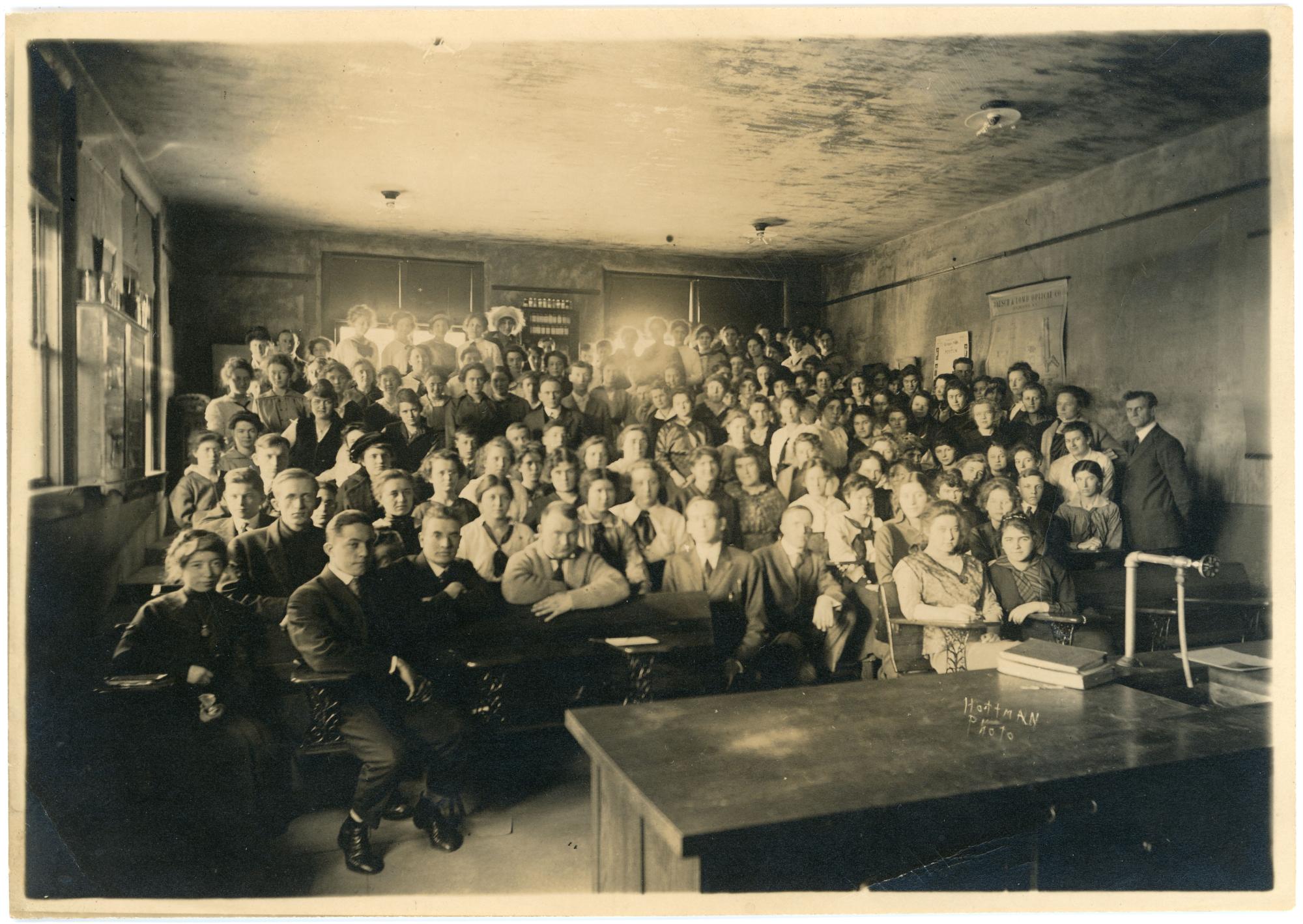
The Class of 1908 had fun with the new building at their Halloween party in October 1907. They arrived at one of the old buildings for the party, but a ghost directed them to the Laboratory Building. There, another ghost pointed them toward the utilities tunnel, through which they had to walk or crawl to reach the party scene. Ghosts and skeletons frightened them along the way. This party was so successful that the Classes of 1909 and 1910 had similar parties. In a more formal occasion, the school had the opportunity to show off its new facilities on May 1 and 2, 1908, when the Iowa Academy of Science met on campus for the first time in its history. A highlight of the meeting was a lecture by Professor Chamberlain on "The Old and New Theories to Account for the Origin of the Earth."
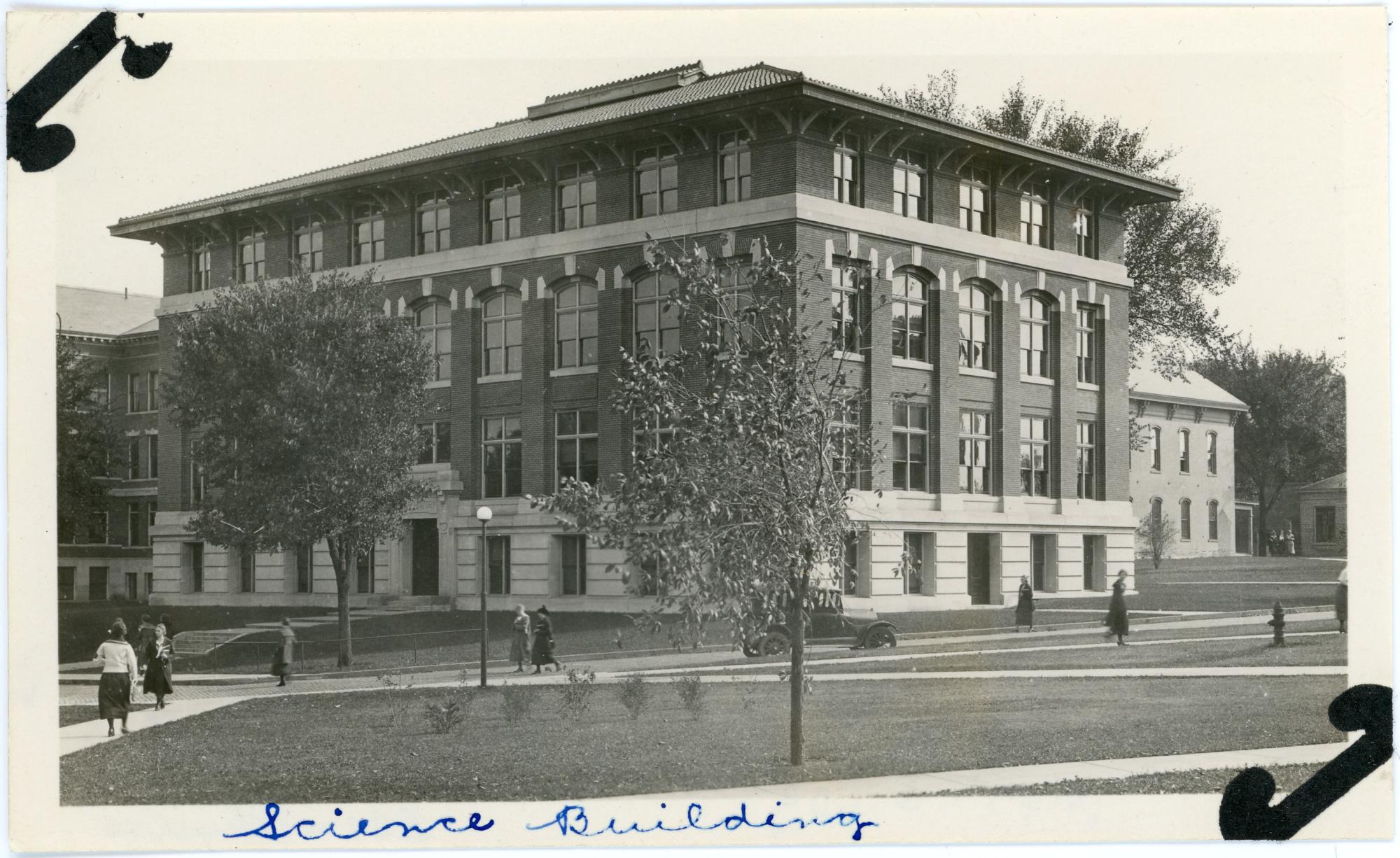
The driveway north of the Laboratory Building was graded in 1909 and paved in 1910. The first significant modification to the building occurred in 1925. To accommodate increased enrollment in chemistry, caused to some extent by a requirement that Home Economics students take six hours in that field, the large lecture room was partitioned into a smaller lecture room and a laboratory. The laboratory for advanced work was increased in size by fifty per cent. A new stockroom and a dispensing room were part of these renovations.
After twenty years of service, the Science Building was still enough of a model facility to be featured in an issue of the Wiley Bulletin in 1927. In early 1931, much of the building's interior was re-painted and re-decorated. New electric light fixtures were installed in the summer of 1935
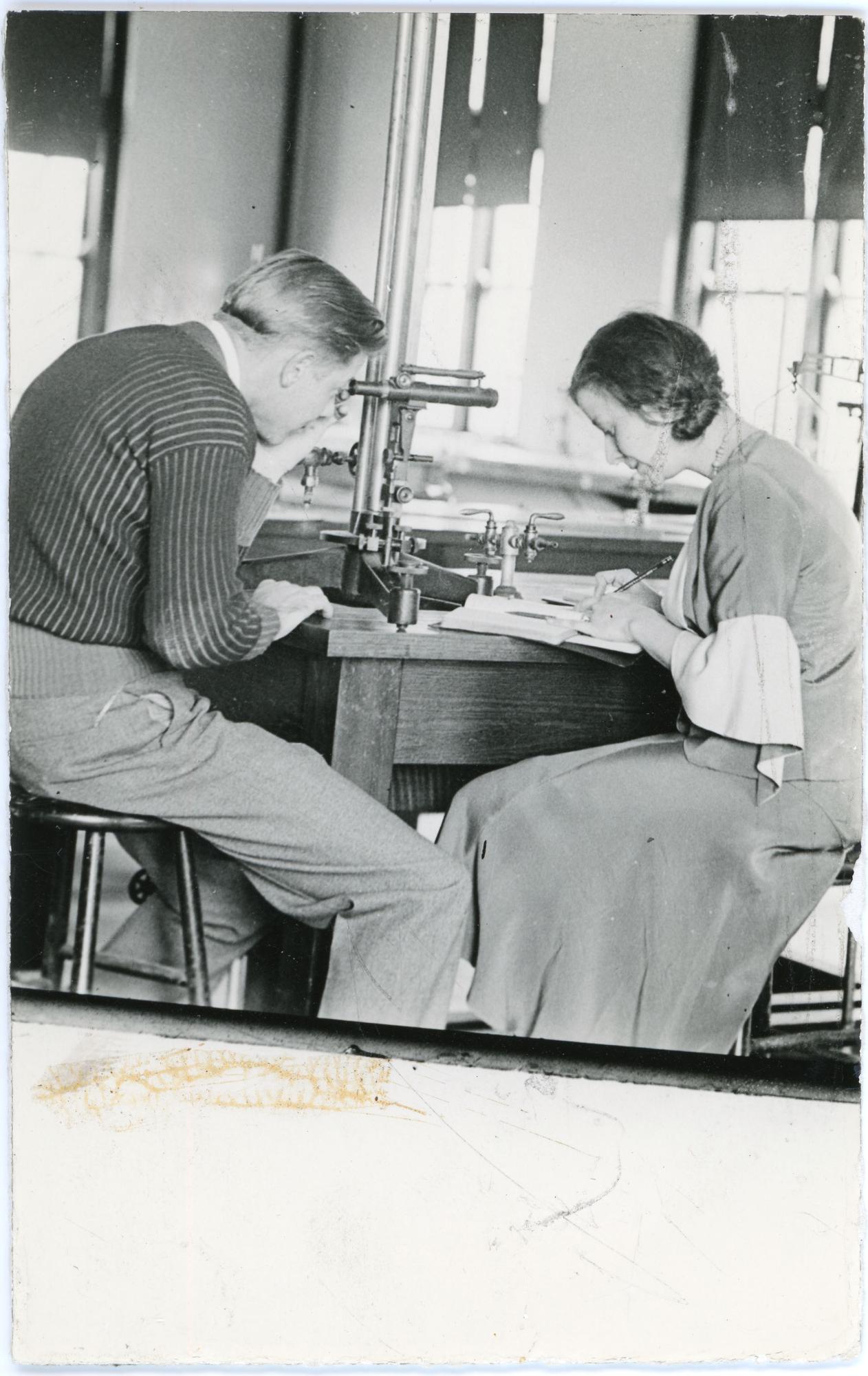
As the end of World War II approached in November 1944, President Malcolm Price announced preliminary plans for campus capital improvements. Plans for new buildings included a new Arts and Industries facility and a new laboratory school. The Science Building was involved in the potential "musical chairs" that would follow shifts of departments to new facilities. Specifically, if a new Arts and Industries Building were built, those faculties would move out of their long-time home in what is now known as Wright Hall and into the new facility. The Science faculty would then move from the Science Building into Wright Hall. And the Commercial Education faculty would move into the Science Building. A new Arts and Industries Building, now known as Latham Hall, was indeed built. Art and Industrial Arts faculty moved to their new home. However, the Science faculty stayed in the Science Building.
A short feature article in the College Eye in 1946 surveyed the arrangement of the Science Building in those days. Classrooms on the first level were devoted to biology, and specifically vocational agriculture. The second level included physics laboratories. The third level had mixed purposes; it included a science library, physics laboratories, and a physiology room. The fourth level was devoted to chemistry.
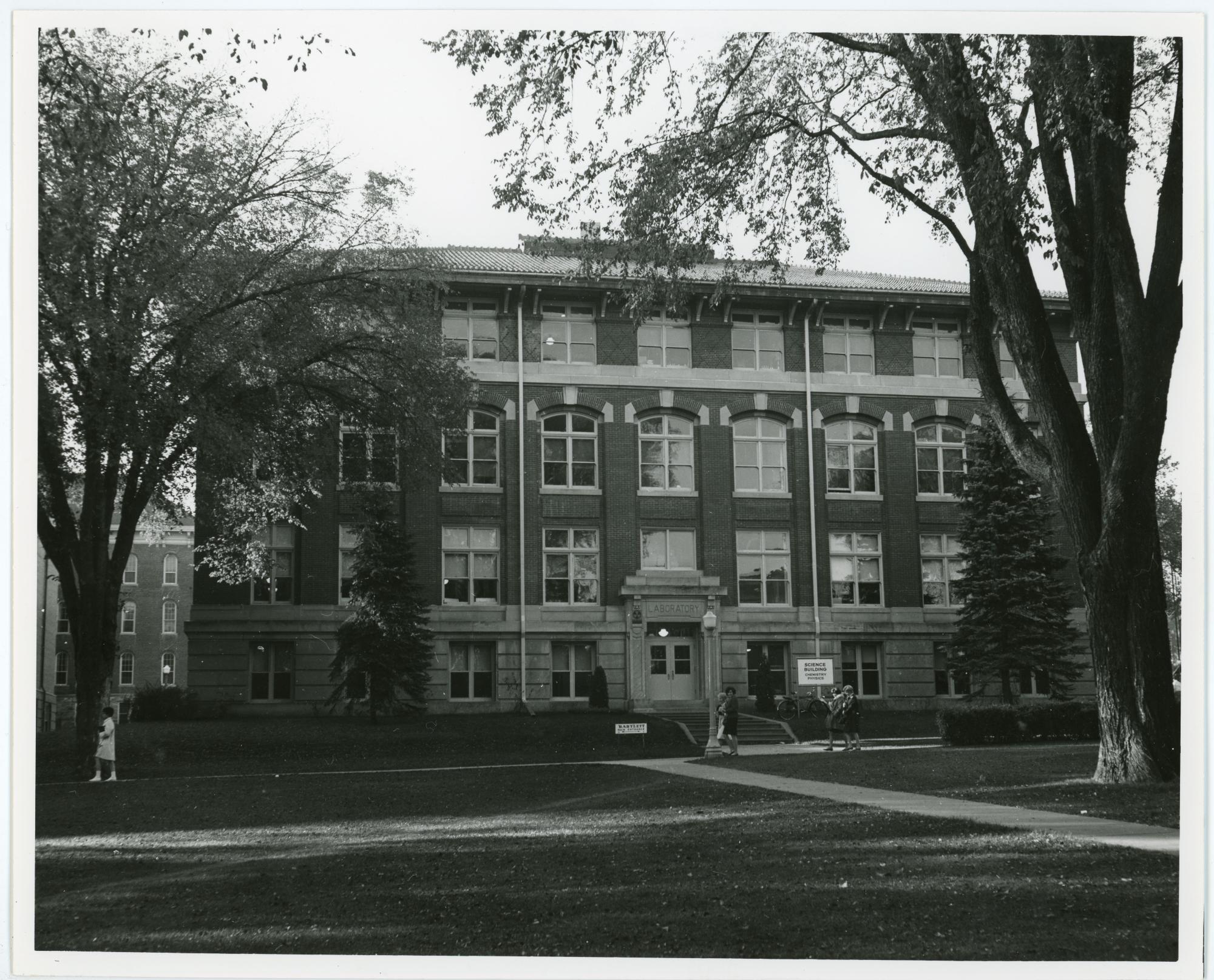
In 1956, the school began to plan for the extraordinary increase in enrollment that the Baby Boomers would cause when they began to reach college age in the middle 1960s. At a Kappa Delta Pi meeting in July 1956, Registrar Marshall Beard, who would become the school's first facilities planner, outlined his vision for the future. Among those plans was an addition to the Science Building. But those plans changed. In 1962, the Board of Regents decided to ask the 1963 General Assembly for $1.775 million for a new science building. Funding was slow to appear, but by 1966 there was enough money from appropriated funds and grants to begin construction of what is now known as McCollum Science Hall. After that building was completed in the summer of 1968, chemistry classes and about 75% of biology classes moved to that building. Physics classes remained in the old Science Building

However, in an interesting sidelight, there was hope that all science classes would eventually be housed in or near the new science building. There apparently were plans to construct a "physics tower" east of the new building and an addition on the west side of the building to house a museum and classrooms for geology and science education. But this was another instance of phantom facilities on the UNI campus that never quite came to be.
In January 1975, the Regents approved a $60,000 remodeling budget for what had by then come to be called the Physics Building. In 1980 an elevator was added in a separate structure connected to the west side of the building. This structure greatly improved accessibility in the building, but its stark limestone facing looked out of place next to the traditional red brick style of the Physics Building. In 1983 the Regents approved a $108,000 contract for window improvements and a $37,000 contract for tuckpointing of the building.
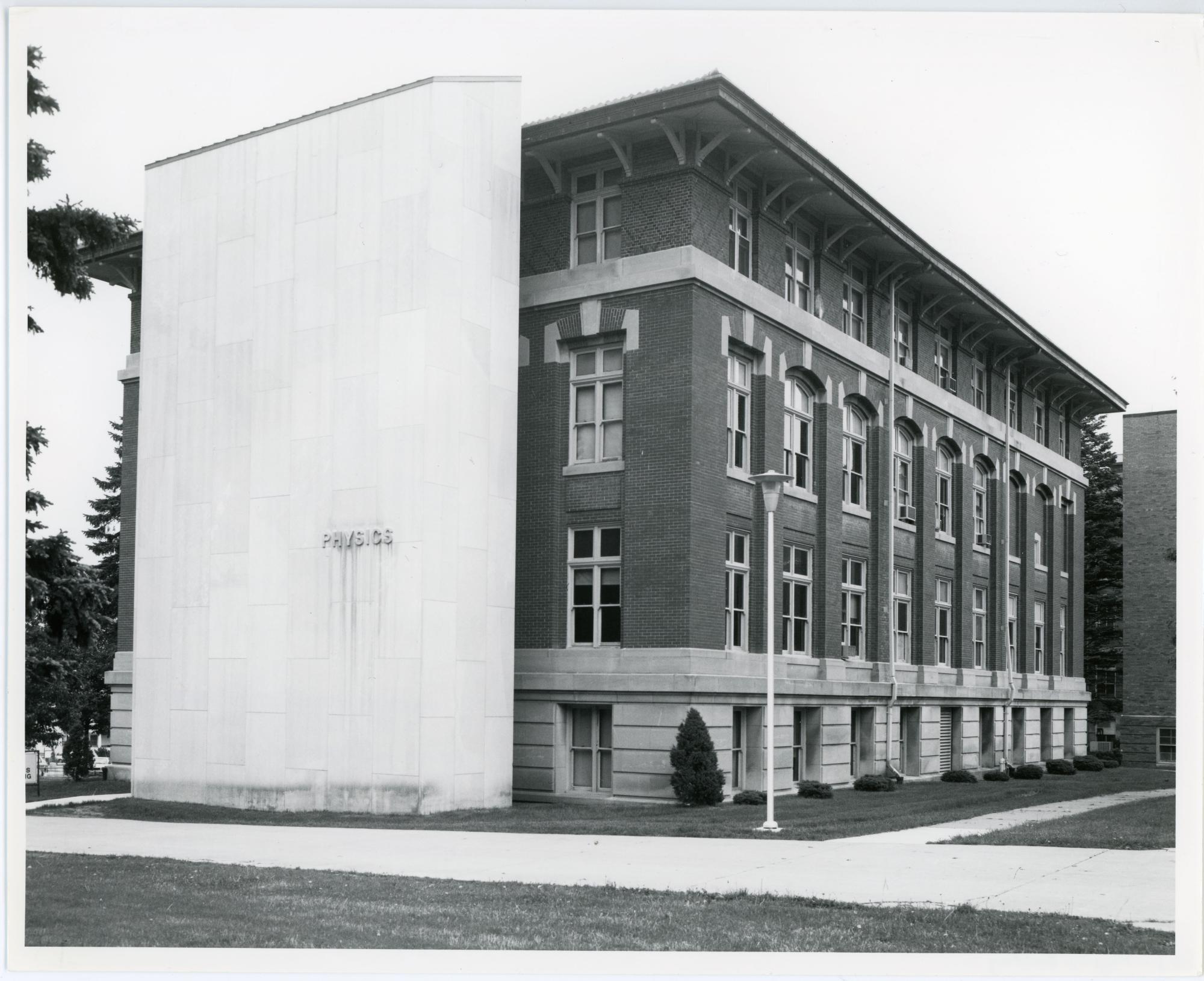
By 1993, the Physics Building was in line for bigger projects. In that year, the building appeared on the Regents' Five Year General Fund Capital Program for a $3.5 million remodeling project. In 1995, the Regents approved the inclusion of $300,000 for Physics Building renovation planning for fiscal year 1998 on their capital improvements list to be sent to the General Assembly. By 1996 the Physics Building, with a budget of $3.9 million, had reached the eighth spot on the Regents' list. Among other UNI projects on that list, a major renovation proposal for Lang Hall still stood ahead of it.
After Lang Hall work was funded and then completed, the East Gymnasium, now known as the Innovative Teaching and Technology Center, emerged as the front runner for capital improvement funds at UNI. When that project got underway in 2004, the Physics Building was the next in line. Director of Facilities Planning Morris Mikkelsen stated, "The physics project is one of the top priorities for requested renovation funding from the state...Hopefully that will be the next renovation project for the campus." President Koob pressed the case: "The Physics Building appears today the same as it did when I attended classes there 44 years ago, and it appeared old and in need of renovation at that time."
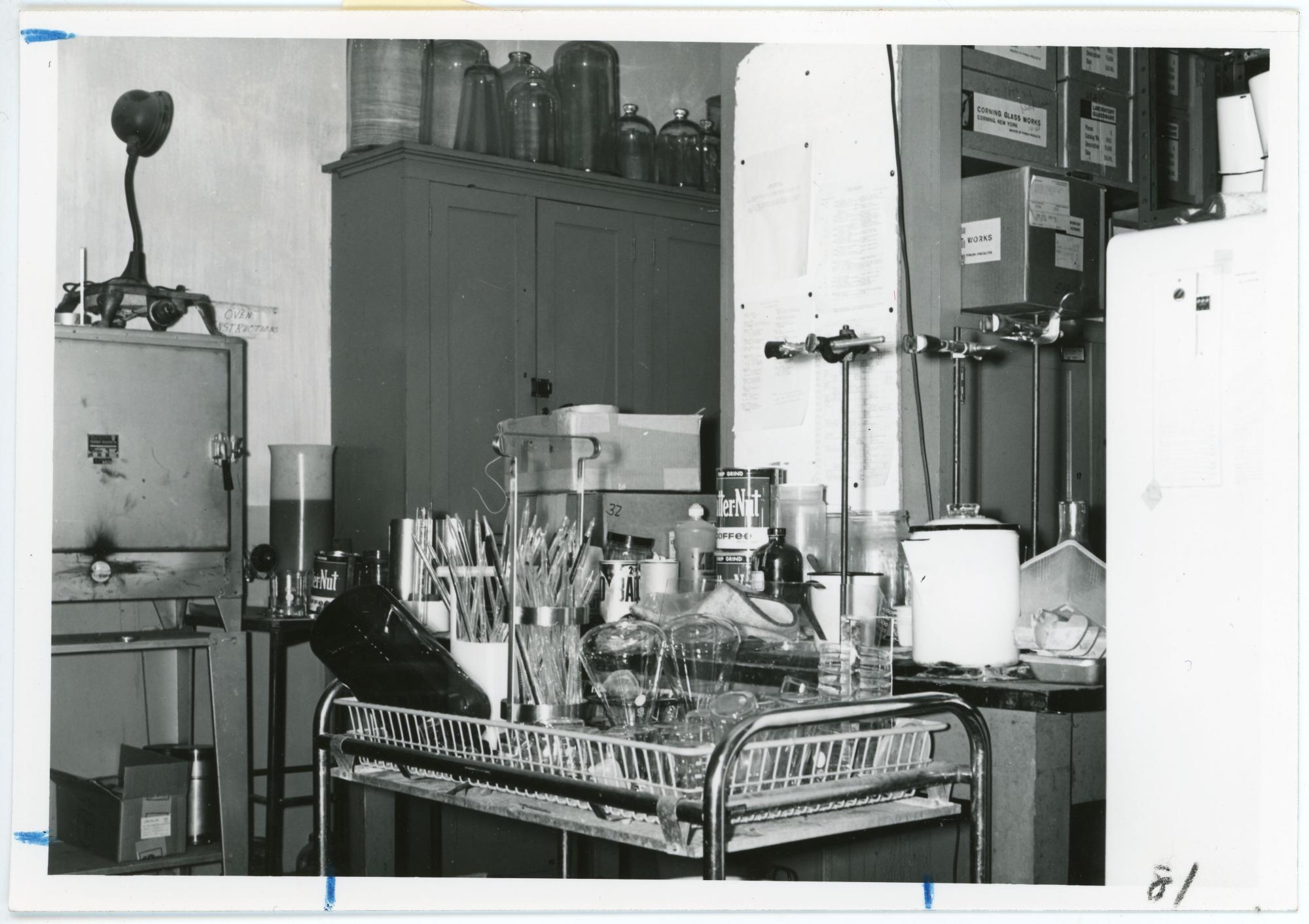
The 2004 General Assembly allocated enough money to fund the Physics Building renovation project, as well as work on McCollum Science Hall and Russell Hall. As a result, the Physics Building underwent a major renovation. This work was part of Phase 1 of the Science Buildings Renovation Project, which included improvements in the Greenhouse and McCollum Science Hall. The Board of Regents approved schematic plans for the Physics Building project in August 2005. Work began in April 2006.
During the project, the main entrance to the Physics Building was moved from the north side of the building to the south side, facing the center of campus. A loading and delivery dock was built on the north side. The elevator tower was demolished. A new elevator was installed inside the building. An elevated walkway connected the Physics Building and Lang Hall.
In the summer of 2005, in preparation for the renovation, classroom equipment was moved to the Center for Energy and Environmental Education, where freshman and sophomore physics classes were offered in the fall 2005 semester. Heavy equipment and the department office moved to the Center in December 2005. Following completion of the renovation project in the East Gymnasium, physics faculty offices moved in March 2006 to Baker Hall and Sabin Hall. Upper level physics classes were taught in Sabin Hall.
At the June 2007 meeting of the Board of Regents, the University requested that the Physics Building be named in honor of Louis Begeman. Professor Begeman joined the faculty of what was then the Iowa State Normal School in 1899. He participated in significant research with Nobel Prize winner Robert Millikan at the University of Chicago. Professor Begeman was head of the Department of Physics at UNI from 1908 until his retirement in 1935.
The Department of Physics moved back into the Physics Building at the beginning of the fall semester of 2007, when work on the renovation project was substantially completed. The building was re-dedicated, with its new name Begeman Hall, in a ceremony held at 2PM, Friday, October 5, 2007. A number of Professor Begeman's descendants, including several grandchildren, attended the ceremony.
Compiled by Library Assistant Susan Witthoft and Student Assistant Jennifer Grant; edited by University Archivist Gerald L. Peterson, July 1996; substantially revised by Gerald L. Peterson, with additional scanning by Library Assistant David Glime and research by Student Assistant Shanna Taylor, December 2006; updated January 28, 2015 (GP); photos updated and citations added by Graduate Assistant Eliza Mussmann, December 9, 2021.
